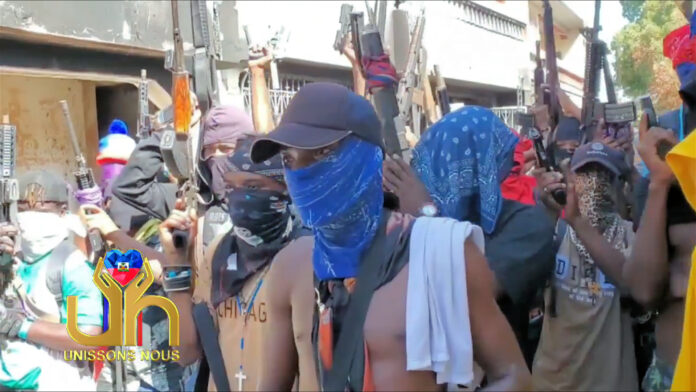
(Français)
“A revolution is not a tea party, or writing an essay, or painting a picture, or doing embroidery; it cannot be so refined, so leisurely and gentle, so temperate, kind, courteous, restrained and magnanimous. A revolution is an insurrection,
an act of violence, by which one class overthrows another.”
Mao Zedong
He was called “the butcher of the blacks.” Another testified that he pursued his enemies “the way one hunts wild beasts. He shot, clubbed, and hanged on a daily basis.”
Those remarks are not about any leader of Viv Ansanm (Live Together), the vilified coalition of armed neighborhood groups which kicked out former U.S.-installed de facto Prime Minister Ariel Henry on Feb. 29 and is today threatening to bring down the new puppets with whom Washington replaced him.
Those were the observations of Charles Leclerc and Jean-Baptiste Brunet, two 19th-century French generals, about Haiti’s founding father General Jean-Jacques Dessalines, whom they first fought alongside and then against.
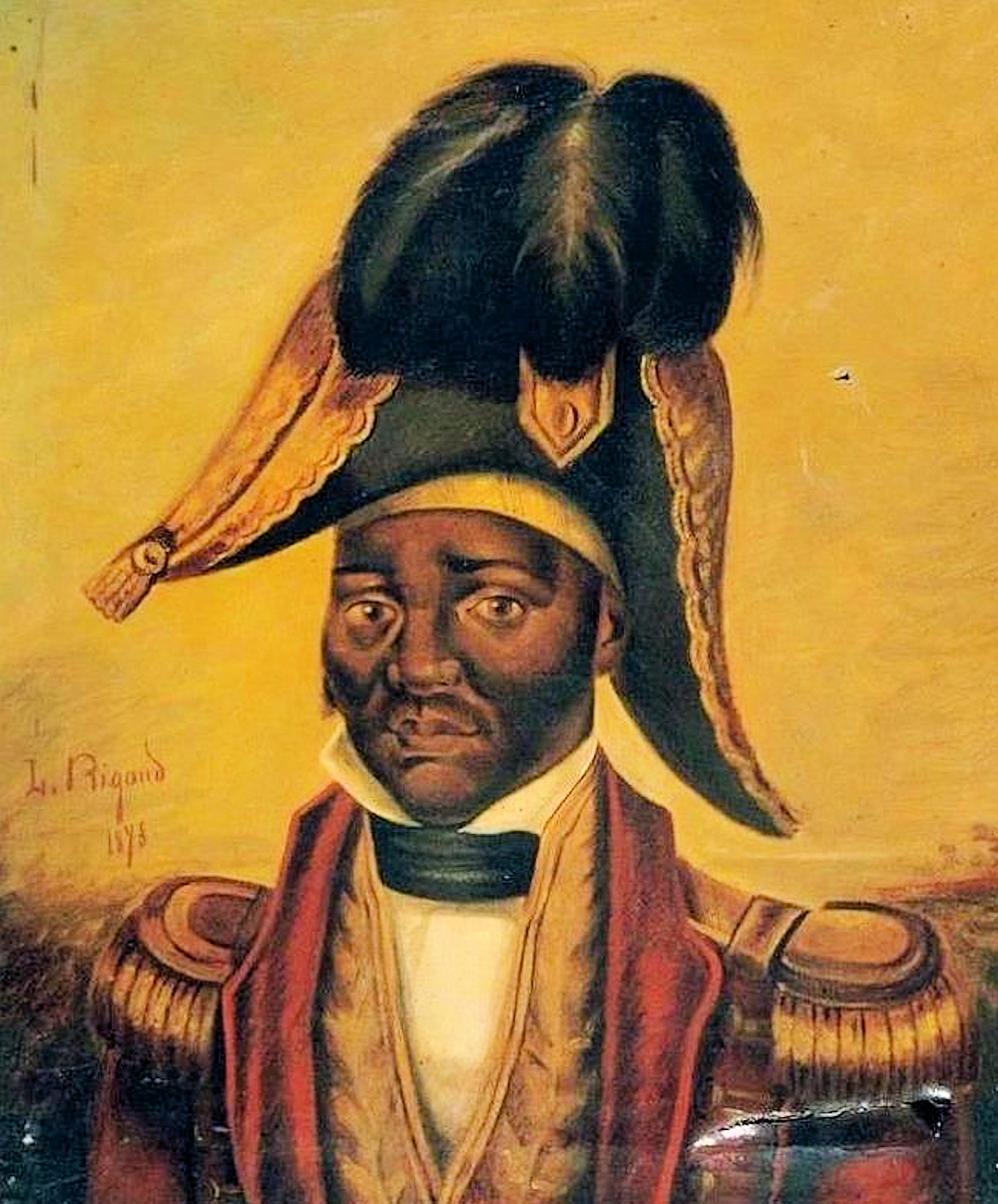
The French generals were referring to the ruthless war Dessalines waged against the marrons (runaway slaves called maroons or congo), who set up remote villages in Haiti’s high, rugged mountains. Dessalines originally fought the congo because they refused to work on the French plantations when Toussaint Louverture was governor-general of the Saint Domingue colony from 1801 to 1802. But after Toussaint’s Jun. 7, 1802 arrest and Dessalines’ decision to seek independence for the colony, Dessalines waged an even more bitter war against them.
“Dessalines faced determined opposition from large bands of African-born marrons,” explained historian Philippe Girard. “In the months that followed his [October 1802] defection from the French army, Dessalines accordingly arranged to have his two main congo rivals, Sans Souci and Lamour Derance, arrested and killed. Thousands of angry cultivators subsequently refused to be incorporated into his army and, amazingly, chose to ally themselves with French expeditionary leader Rochambeau instead.” As a result, Dessalines burned some of their villages and killed many in their communities.
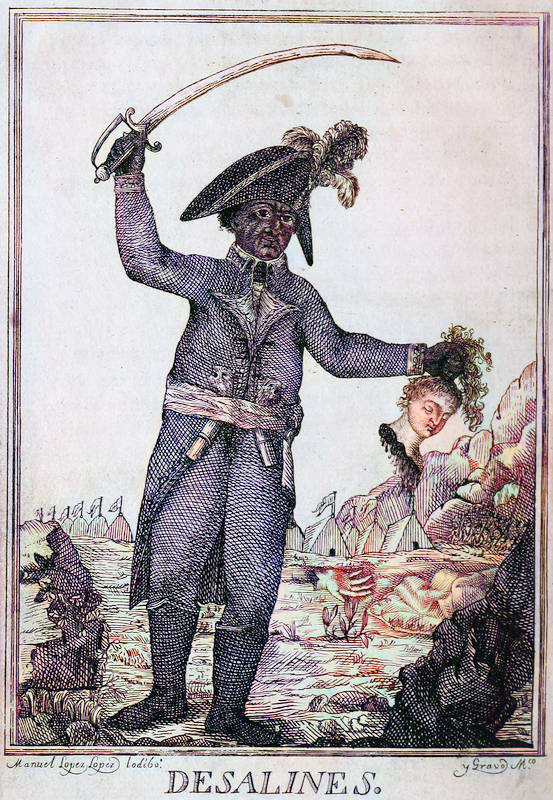
That situation in Saint Domingue 221 years ago is eerily similar to the confrontations taking place in what might turn out to be Haiti’s second social revolution unfolding today.
Several towns and neighborhoods around Haiti have chosen not to join the Viv Ansanm coalition but rather to ally with the enemies arrayed against it: Washington, its puppet Transitional Presidential Council (CPT), Prime Minister Garry Conille, the Haitian National Police (PNH), and the U.S.-led, Kenyan-fronted, non-UN mercenary force of foreign cops known as the Multinational Security Support mission (MSS).
The historical role of these recalcitrant towns and neighborhoods is analogous to that of the marrons’ opposition to Dessalines’ efforts to build a liberation army. As a result, the Viv Ansanm forces and its allies have had several confrontations with armed groups in towns like Pont Sondé and Arcahaie, north of the capital, Léogâne, south of the capital, and in several Port-au-Prince neighborhoods like Delmas 30, Delmas 32, Delmas 75, Christ-Roi, Nazon, and Solino.
In many cases the forces fighting the Viv Ansanm are led by policemen, like a certain “Angelo” in Delmas 30, who has allegedly executed people simply because they live in Viv Ansanm-controlled areas like Village de Dieu or Grande Ravine.
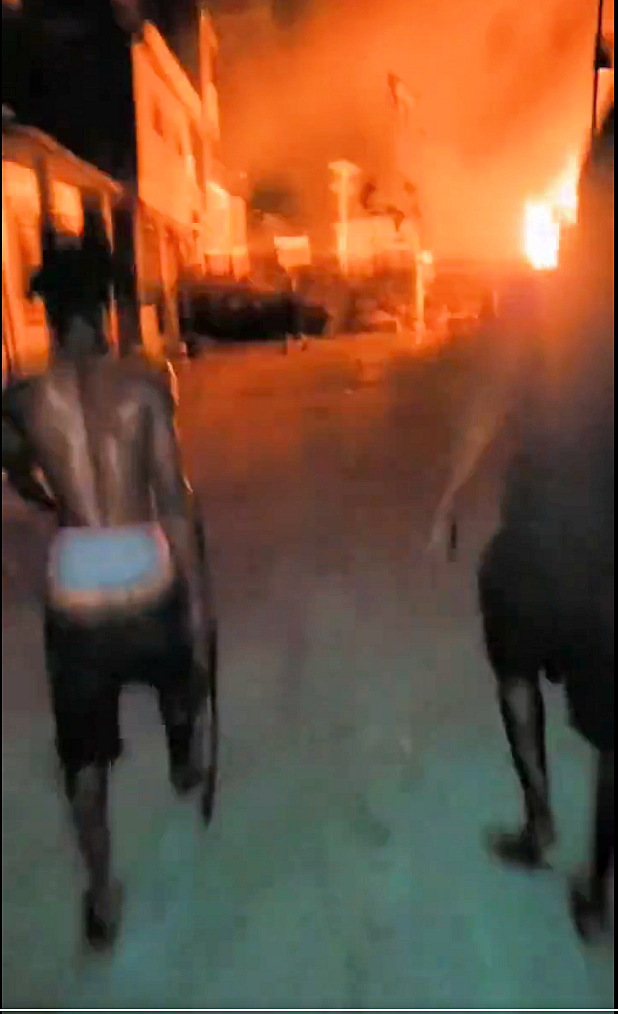
Sometimes, the fog of war makes it difficult to know exactly who attacked whom first. For example, Jeff “Ti Jeff” Larose leads the Viv Ansanm armed group (known as the Taliban) in Canaan, a sprawling, makeshift shanty town that sprang up on a flood plain just north of Port-au-Prince after the 2010 earthquake. He claimed, in a viral TikTok video, that armed men at a road barricade in Arcahaie, several miles further north, killed five religious people – men and women – just because their national identification cards showed they were from Canaan.
“They were even carrying bibles,” Jeff said. “They weren’t involved in anything.”
In response, his soldiers made a night-time raid on Arcahaie on Oct. 9. Some reports said there were no casualties, but other sources told Haïti Liberté that up to 50 people in Arcahaie were killed. Whatever the case, the raid was supposed to send a message to the Arcahaie armed group that Canaan would not tolerate people from its area being arbitrarily targeted, pulled from vehicles, brutalized, or killed.
However, a source in close contact with the Arcahaie armed group called Jeff’s story about the killing of five religious people “a complete fabrication” and charged that Jeff’s group had been savagely attacking Arcahaie, killing an 81-year-old man and beheading a 21-year-old woman and her mother, then putting their heads on pikes.

Meanwhile, another grisly video has been circulating on Haitian social media showing a severed arm and leg hanging by ropes somewhere in Solino. “This video should be circulated widely for people to see the crimes that the Solino guys are committing,” says the caption on the video. “You see what they do?” says the video’s main narrator. “Kill people, chop them up, and then hang the pieces. And then they say Viv Ansanm is bad… The Solino guys did this… Cops did this… Things we never would do, they’ve done here.”
Such stories with accompanying gruesome videos have set Haitian social media on fire, fueling intense debate.
All Revolutions Have Such Violence and Terror
The struggle among the masses – between people who should be allies – is not unique to the Haitian revolution. Every revolution has such events. And the bourgeoisie’s media and agents always seize on these contradictions to undermine the revolutions.
The French Revolution’s violence and “terror” is well-known and iconic, as many innocent people and even the revolution’s leaders fell victim to the guillotine, which became that period’s symbol.
The Russian Revolution also had some very bitter battles within the masses, about which its leader, Lenin, wrote extensively. In his classic pamphlet, “Left-Wing” Communism: an Infantile Disorder, Lenin explained the Bolsheviks’ “ruthless struggle against petty-bourgeois, semi-anarchist (or dilettante-anarchist) revolutionism,” singling out the Socialist-Revolutionary Party which he said “stubbornly refused (or, it might be more correct to say: was unable) to understand the need for a strictly objective appraisal of the class forces and their alignment.” (It could be said that many Haitian leftists have not made such an “objective appraisal” in Haiti today.) Lenin also faulted the SRs for condemning “the terror of the Great French Revolution, or, in general, the terror employed by a victorious revolutionary party [i.e. the Bolsheviks] which is besieged by the bourgeoisie of the whole world,” as was the case in 1917-1919 Russia.
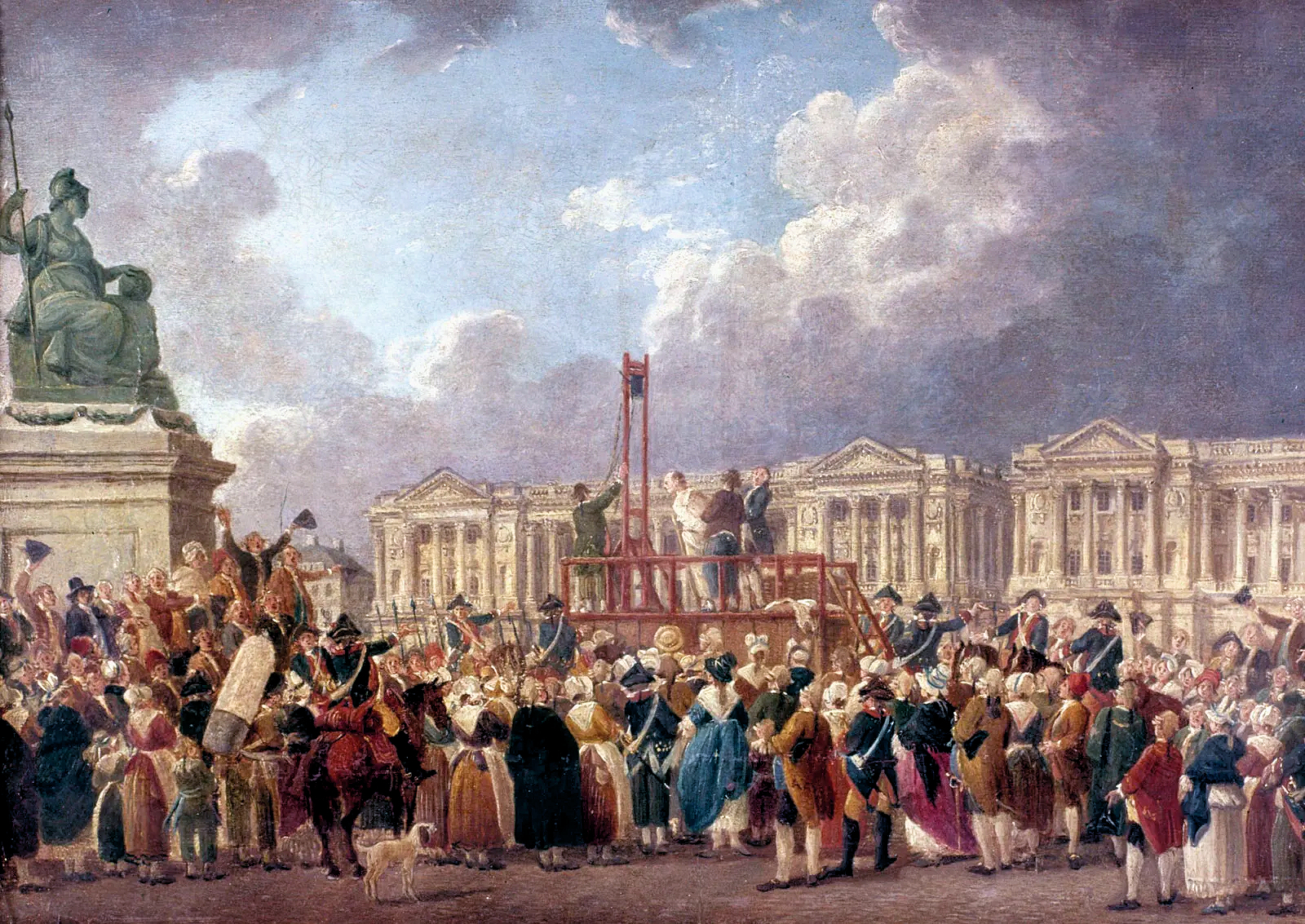
The Chinese Revolution also had terrible struggles. After the Communist victory in 1949, Mao Zedong and the Communist Party “initiated a campaign against ‘counter-revolutionaries’ and other opponents, especially officials in the previous Nationalist government,” recently wrote Doug Bandow for the Libertarian Cato Institute (to be taken with a grain of salt). “[Mao] admitted 700,000 deaths, but the real toll reached as high as two million. He dismissed criticism of the human cost, contending that it was necessary to secure power. Subsequently he targeted supposed ‘capitalist’ elements, resulting in hundreds of thousands more deaths. He insisted that ‘the worst among them should be shot.’ Others were criticized and sent to labor camps.”
The Jan. 1, 1959 Cuban Revolution, when Fidel Castro’s July 26th Movement overthrew Gen. Fulgencio Batista’s dictatorship, was no exception. There were many arrests and executions. At a televised trial of accused counter-revolutionaries in October 1959, Fidel was asked: “Is this the return of Batista’s terror?” Fidel paused to think for a moment and then replied: “No. This is revolutionary terror.”
This brief historical review is not to endorse or glorify the violence and terror which accompany revolutions, only to clinically acknowledge it as a feature of all revolutions, as a doctor might diagnose a patient’s symptoms.
Haiti’s Bourgeoisie Likely Stokes the Violence, As in the Past
The recent spike in Haiti’s violence and terror, from both sides of the conflict, may well result from the political advances that the Viv Ansanm coalition has scored in recent weeks by holding almost daily online live discussions, similar to giant town-hall meetings which tens of thousands of Haitians follow and participate in, mostly on TikTok.

Many are drawn by the opportunity to talk or listen directly to Viv Ansanm’s leader and spokesman Jimmy “Barbecue” Cherizier, who has been playing a game of Whack-a-mole with TikTok censors. Channels he has opened, despite having huge followings, have been shut down, only for him to open up new ones. Other Viv Ansanm leaders, like Christ-Roy “Krisla” Chéry, also have TikTok channels in whose live broadcasts Cherizier participates.
The broadcasts, all in Kreyòl, clearly have generated some degree of interest and support from Haitians in Haiti and its diaspora, and this has greatly alarmed Haiti’s bourgeoisie, and surely the U.S. State Department.
“It’s an outrage that a known criminal, a terrorist, a murderer, a monster, can be allowed to just talk to people and spread his lies so freely and easily,” said a wealthy Haitian businessman of the broadcasts. “This really should be stopped somehow.”
In the past, and almost certainly now, the Haitian bourgeoisie has provided money, guns, and ammunition to some armed groups to fight others. For example, Cherizier announced the founding of his first federation of armed groups, the G9 Family and Allies, in June 2020, with the purpose of “stamping out crime in Haiti’s poor neighborhoods.” The very next day, a Cité Soleil leader, Gabriel “Ti Gabriel” Jean-Pierre, whom oligarch Réginald Boulos publicly admitted to supporting, announced the formation of the G-Pèp, a federation which soon came to include many of Haiti’s most infamous criminal gangs involved in kidnapping, rape, extortion, and robbery.
For the next four years, the two federations were engaged in almost constant, bitter fighting until they merged in February 2024 into the Viv Ansanm coalition.
It is therefore likely that Haiti’s oligarchs, who totally support Washington’s concocted political and military alliances in Haiti, are again using their economic power to support the recalcitrants fighting the Viv Ansanm. It is known that one oligarch, Prophane Victor, backs the anti-Viv Ansanm forces in Pont Sondé, and Cherizier claims to have proof that the policemen who are residents Port-au-Prince’s Solino neighborhood are being financed to attack his neighborhoods of Delmas 2, 4, and 6.
The Doctrine of Divide-and-Conquer
Both the British and the U.S. empires owe much of their rise and success to mastering the art of sowing dissension among their enemies. From the European conquest of North America, where indigenous tribes and nations were pitted against each other or lured into ephemeral alliances, to the subversion of the anti-war, anti-imperialist, civil rights, progressive movements in the U.S. during the 1960s and 1970s through covert programs like COINTELPRO, Washington has demonstrated its expertise in setting its foes at each others’ throats.
This calculus goes back to the North American “founding fathers.” Many of them – land-owning, slave-owning, ship-owning bourgeois – were worried that the democracy they were fashioning could eventually be used to strip them of their property and wealth by the united, voting masses.
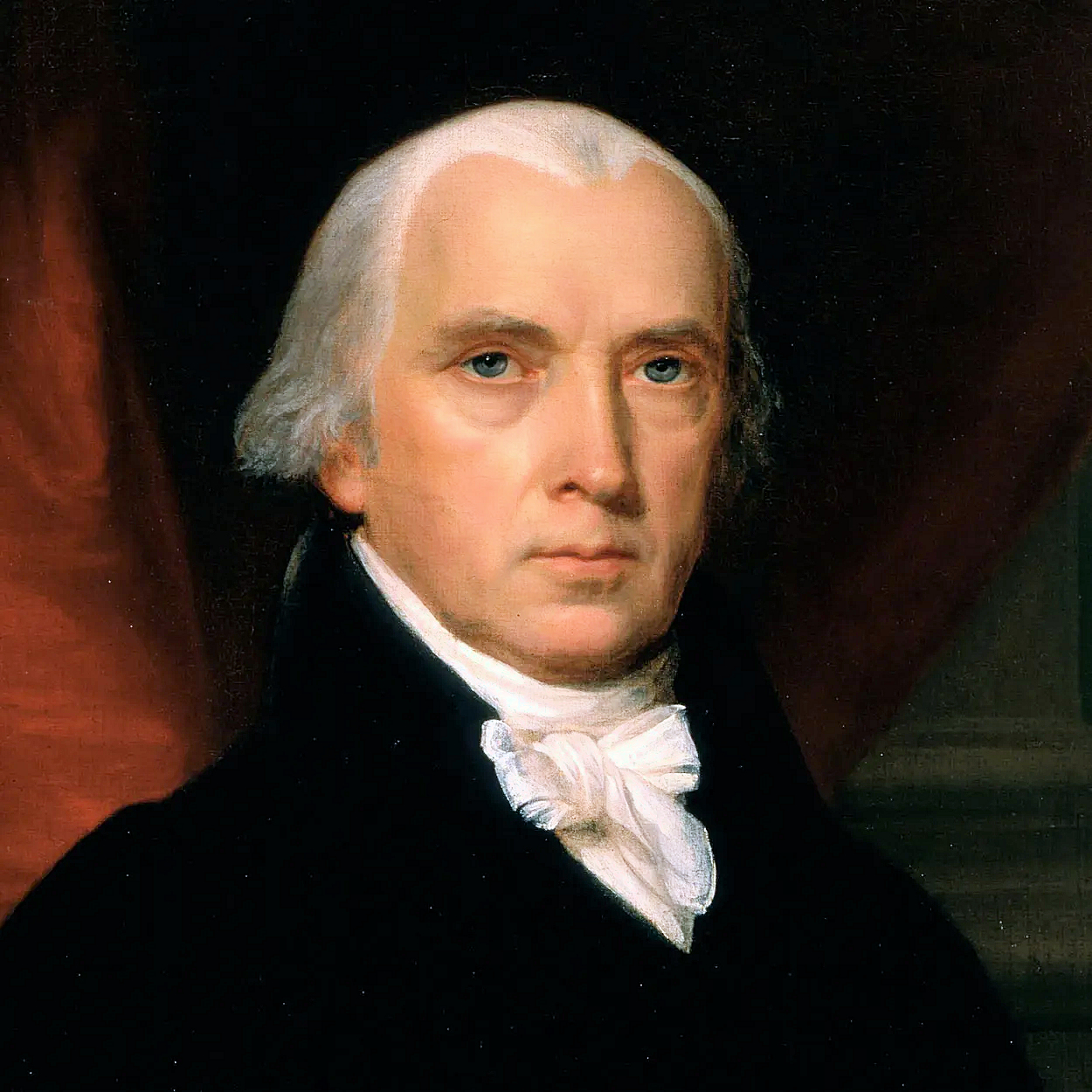
But James Madison, sometimes referred to as the “Father of the Constitution,” reassured the ruling class not to worry, in his “Federalist Papers” essays (along with Alexander Hamilton and John Jay) to convince New Yorkers to ratify the U.S. Constitution in 1787.
Political democracy would never become economic democracy because it was easy to divide the masses in a million ways, he explained.
The Union of all the States would help thwart and throw up “greater obstacles” to “the secret wishes of an unjust and interested majority” because there would be the growth of “factions” (i.e. division), and therefore “the Union gives … the most palpable advantage” to the bourgeoisie with its “enlightened views and virtuous sentiments” over “local prejudices and schemes of injustice,” Madison wrote in Federalist No. 10.
“The influence of factious leaders may kindle a flame within their particular States, but will be unable to spread a general conflagration through the other States,” he argued. “The variety of sects dispersed over the entire face of [the Union] must secure the national councils against any danger from that source. A rage for paper money, for an abolition of debts, for an equal division of property, or for any other improper or wicked project, will be less apt to pervade the whole body of the Union.”
Thus in the same way, Washington and the Haitian bourgeoisie are using every instrument in their toolbox to divide the masses, inhibit their class consciousness, and sabotage the nationalist project of the current uprising of Haiti’s underclass, of which the Viv Ansanm coalition is the expression.
Subverting the Call for Dialogue
Cherizier’s major message these days is the need for a national dialogue, for the armed groups of Haiti’s poor neighborhoods to have a seat at the table of forces deciding Haiti’s future. Washington and its coalitions of subservient politicians and police forces have refused to even entertain this call.
“Either we have political dialogue and reconciliation, or we are heading toward a civil war,” Cherizier has repeatedly warned.
In response, Washington and the Haitian bourgeoisie, which owns most of Haiti’s media and YouTube pundits, have launched a multifaceted campaign to sow distrust and division among the masses (much as the French recruited the marrons), and depict the Viv Ansanm as murderous killers.

Meanwhile, the PNH has tried to minimize their own losses. Earlier this month, the police announced that it had “mortally wounded” 20 “bandits” in the area of Torcel, without offering any proof: no photos, no videos, no names, no captured weapons, no bodies. But a few hours after the “successful operation,” the Viv Ansanm affiliate in the area published a video of its soldiers burning a PNH armored car.
However, sources in Torcel say that the PNH suffered serious losses that day, and that two Kenyan policemen were killed in the fighting, while the body of one of the Kenyans was mutilated. Haïti Liberté has not been able to confirm the report.
In short, the U.S., France, and Canada have lost control of Haiti, their long-time neocolony, just as France had lost control of Saint Domingue, its richest colony.
Furthermore, for various reasons, there are several factors which are working in favor of those seeking radical change in Haiti. First, the nation today has no elected officials, and, second, the Haitian masses are fed up with foreign interventions (three in the past three decades). Thirdly, the U.S. empire is overextended in Ukraine, Gaza, and now Lebanon, Yemen, and Iran, just as Napoleon was fighting wars on many fronts.
Above all, the Haitian masses that today’s imperialists are trying to subdue are armed and have been engaged in warfare for the past five years, much like the former slaves that Dessalines sought to muster in his day.
Washington is directing the counter-insurgency war against the Resistance Forces of the Viv Ansanm and Allies, Mess with One, You Mess with All (the formal name), but is obliged to use Kenyan police as its proxy. There are only 400 Kenyans in Haiti so far (with a token smattering of other nations’ cops), and they haven’t done much fighting. But Kenyan President William Ruto promises another 600 will be arriving soon. That still will leave the MSS with less than half of the 2,500 policemen Washington wanted it to have.
Meanwhile, the PNH cops are the ones battling the Viv Ansanm, most of them half-heartedly, in part because they’re paid 10 times less than the Kenyans, a source of deep resentment.
Momentum and motivation definitely appears to be on the side of the resistance.
“The ends justify the means” is a dictum often attributed to Niccolò Machiavelli, the author of The Prince, a 16th century European manual on how to win and hold political and military power.
The coming days are sure to see many more horrors and great hardship for the Haitian people, but one is reminded of Machiavelli’s words as the possibility of major, systemic change appears to be closer and more promising than at any point in recent Haitian history, as the U.S. empire declines, and Haitian consciousness, resolve, and discussion at the grassroots grows.
As the U.S. empire and Haitian bourgeoisie seek to sow and promote division among the masses, it remains to be seen if the Haitian people can live up to the motto on their flag: “L’Union fait la force” or “Unity makes strength.”










[…] Revolutions are Violent, Contradictory, and Messy, in Haiti as Elsewhere Haiti Liberte […]
[…] (English) […]